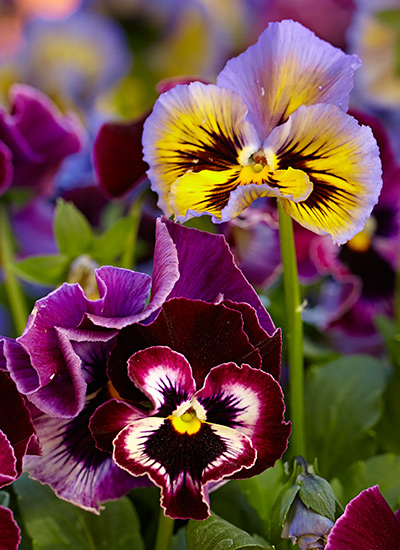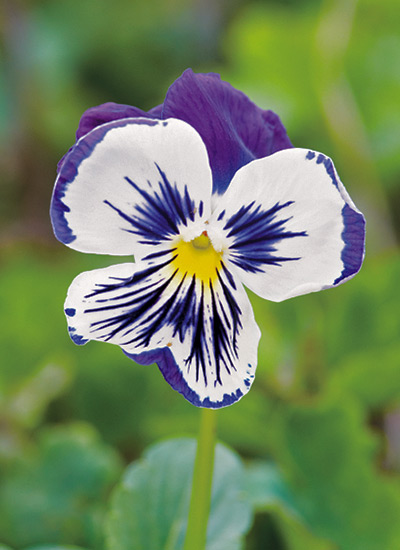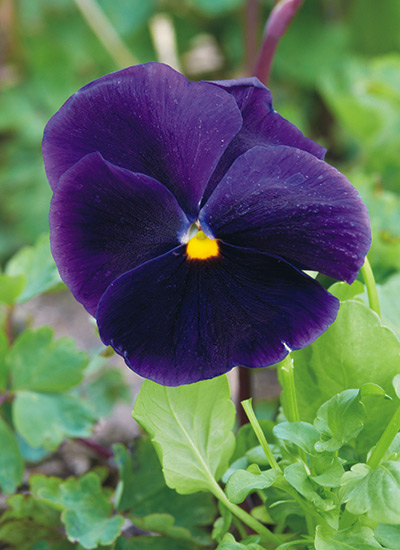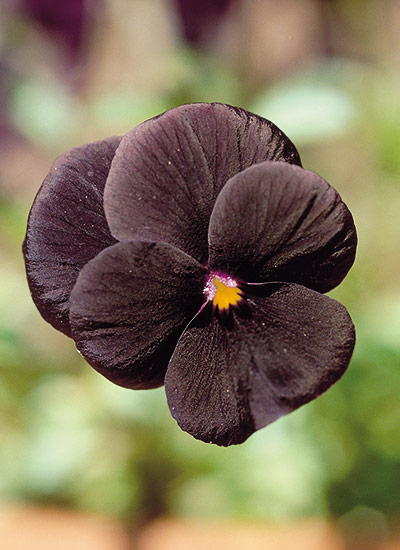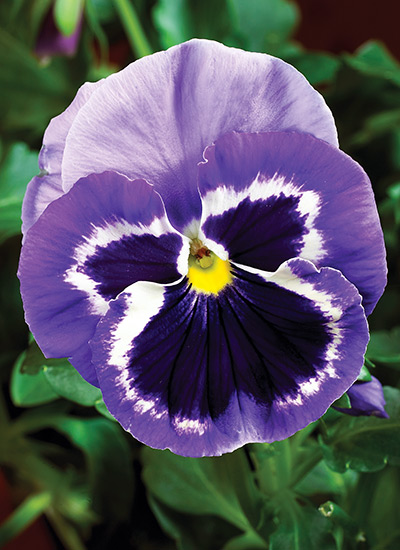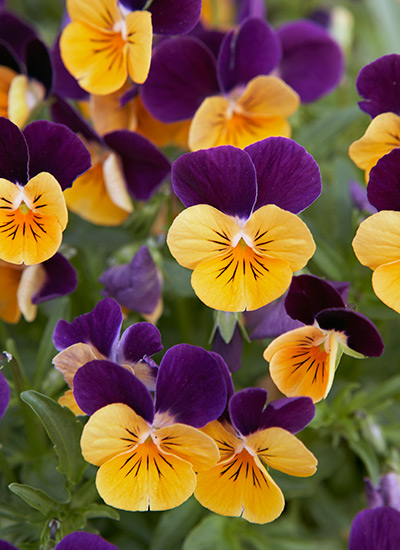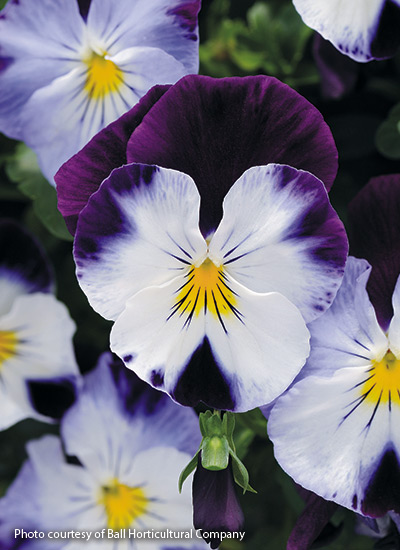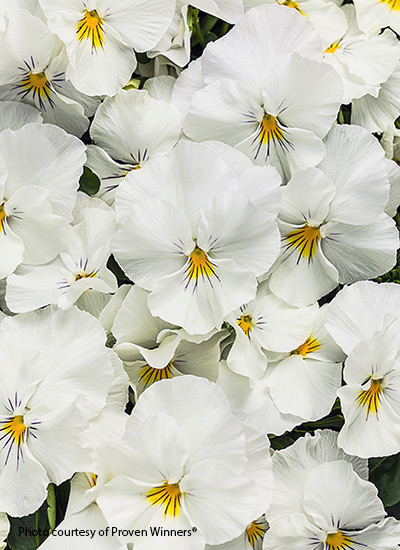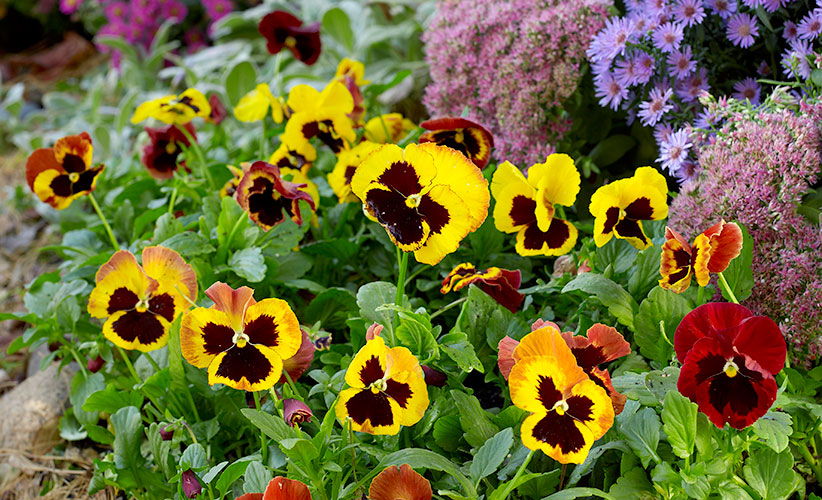
Pansies are a great cool-weather flower
Don’t pass by those colorful displays of pansies at the garden center! Fill your cart with a flat or two of these cool-weather beauties and head for the garden. I planted the ones in the photo above in fall — that’s a good way to get the most for your dollar. Why? They love cool weather, so in warm-winter zones will bloom through the winter months. And even in zone 5, although they stop blooming with a hard frost, they’ll start blooming again in spring. That’s two seasons for the price of one! Keep reading to learn more great tips on how to grow pansies.
Are pansies an annual or a perennial?
Pansies are short-lived perennials. Have you ever planted a six-pack or two for some spring color and noticed later in the season that they’ve disappeared? I already mentioned that they love cool weather, but they don’t do well in the heat. In fact, if summers are cool where you live, your plants could live for two or three years.
You Might Also Like:
Cool-season containers with pansies
Helpful gardening videos
Coneflower growing guide
How to grow better gerbera daisies
8 cool-weather plants
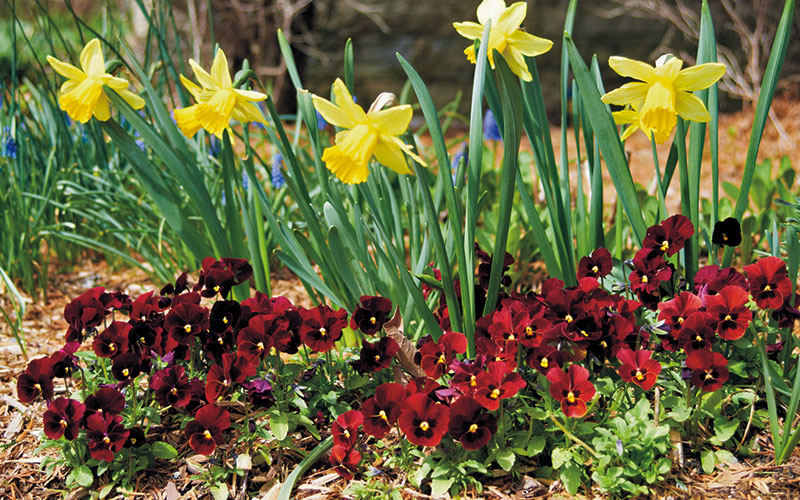
Flowers all spring
The great thing about pansies is the multitude of flowers they produce. The largest flowers are up to 4 inches wide, while others are much smaller, closer to an inch. While both types bear the botanical moniker Viola, the large-flowered ones are usually called “pansies” and the smaller ones are often called “johnny jump-ups” or “violas.”
Confused about the difference? Don’t feel bad, there’s been so much crossing and criss-crossing that they’re all complex hybrids now. For the sake of simplicity, I’ll just call them all pansies here! No matter what size the flower is, there’s a huge range of colors and patterns available. Take a look at slideshow at the bottom of the article for some ideas of what you might find at your favorite garden center or available to order online.
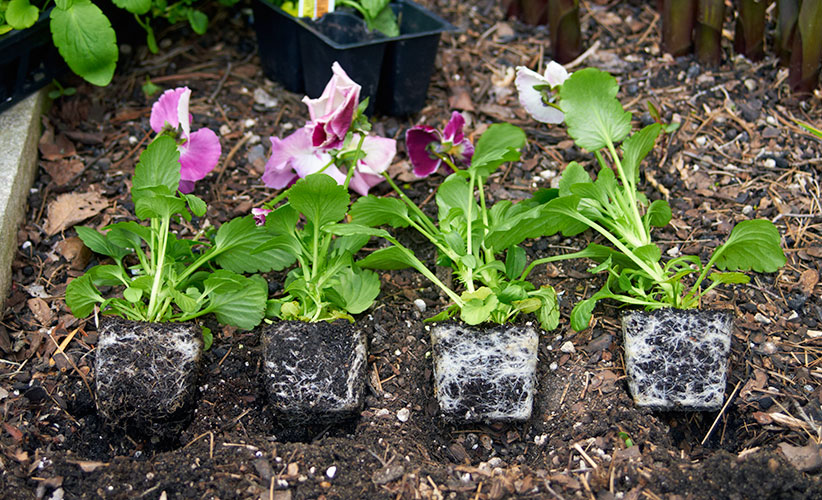
How to grow your best pansies
Pansies are the perfect choice for anyone who wants some garden color during the cool-weather months. They don’t need a lot of maintenance to flower prolifically. I’ll give you the basics for growing them here and tell you how I overwintered some in our zone 5 test garden below.
Most pansies come in 4- or 6-packs, and they don’t get very wide even after you plant them in the ground. So to get that gorgeous mass-planting look, don’t spread them out. Plant them closely like I’m ready to do in the photo above. See how tightly they’re spaced? These pansies are just a little farther apart — 2 to 4 inches apart on center at the most — than they were in the pack.
Ideal soil and light conditions for pansies
Whether you’re planting pansies in spring or fall, they can grow in a variety of conditions from full sun to part shade.
- You’ll get the best flowering with lots of morning sun but will probably need to water them a little more, especially if spring is on the dry side.
- These plants prefer consistent moisture.
- Pansies growing in part shade will still flower, and may not need as much water.
- Well-drained soil will keep the roots from rotting.
Fertilize pansies for more flowers
To keep a steady supply of these beautiful flowers, feed your pansies regularly. Use a balanced formula such as a 10-10-10 or one with slightly higher nitrogen (that’s the first number). If you’re growing pansies over winter, apply a balanced slow-release fertilizer to help feed the plants during warm spells.
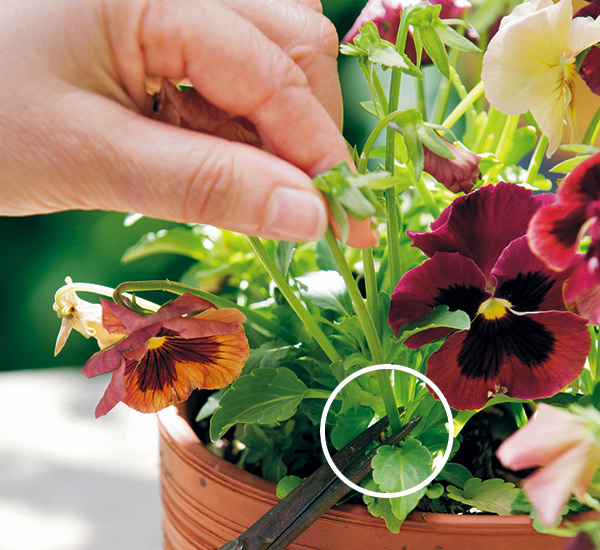
Deadheading pansies
Well-fed pansies produce a lot of flowers so remember to deadhead. This helps plants rebloom more quickly and keeps plants looking tidy. It’s easy to do, you just have to make sure you’re cutting off the right stem. I don’t know how many times I’ve snipped off one in full bloom because of all the stems among the foliage.
Pansy deadheading tip
Finally, I figured out how to make sure I’m snipping the right thing. I grab the spent bloom between two fingers. Then see how I’ve placed the garden snips in the photo above? Follow the stem down to where it connects with the leaves and snip it off.
You Might Also Like:
Perennial deadheading guide
Container plants that you don't have to deadhead
Long-lasting annuals for your garden
10 low-maintenance perennials
3 techniques for deadheading perennials
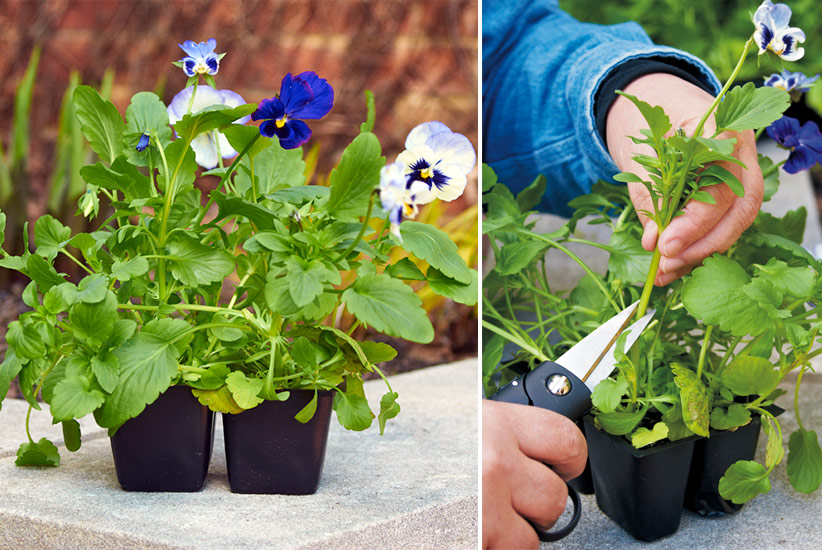
How to fix leggy pansies
As the season wears on, whether it’s the pansies you planted earlier or ones for sale at the garden center, you’ll probably notice the plants getting leggy It’s pretty common to see them looking like the one above left. Go ahead and cut them back by as much as one-third. Just be sure to leave some foliage to nourish the plant. If it’s late in the season or if the pansies aren’t looking too vigorous, you’re better off just pulling them out of the garden or passing on the bargain.
Two reasons why your pansies may be getting leggy:
1. Warm nights
As it gets closer to summer, nights get warmer, which causes pansies to stretch.
2. Lack of fertilizer
Keep pansies fed — all that flowering takes a lot of energy.

How to bring your pansies back after winter
Don’t give up on your pansies when winter sets in. They naturally survive cold much better than they do heat. In California, the South and Southwest, pansies are a staple of winter gardening since the temperatures usually stay mild for much of the season. The Midwest and Northeast may not get to enjoy flowering pansies through the winter, but the plants can survive to flower again in early spring. Here are a few tips:
Snow helps insulate pansies over winter
Snow cover is a great insulator, so if you live where you can count on snow, the pansies should do just fine. But snow cover isn’t reliable for us, and our test garden sits on low ground. I waited until after a hard frost so critters wouldn’t make themselves at home and added another few inches of mulch on top of the plants (for a total of about 6 in.). In the photo above you can see how I pulled back the mulch in late February so plants wouldn’t rot. Seven weeks later we had beautiful spring flowers! The mid- to small-flowered types bounce back the quickest even after a hard winter. The large-flowered types will usually show up about two weeks later.
Mulch helps protect pansies
Fall-planted pansies overwinter better, come back more quickly in spring and last longer into summer with 2 to 3 in. of mulch after planting. Where winters get below 0 degrees F, mulch keeps soil temperatures even and prevents the freezing and thawing that heaves them out of the ground. In the South, mulch conserves moisture, keeps weeds down and helps your pansies look good.
You Might Also Like:
How to overwinter geraniums
Fall garden checklist
How to save tender bulbs for next year
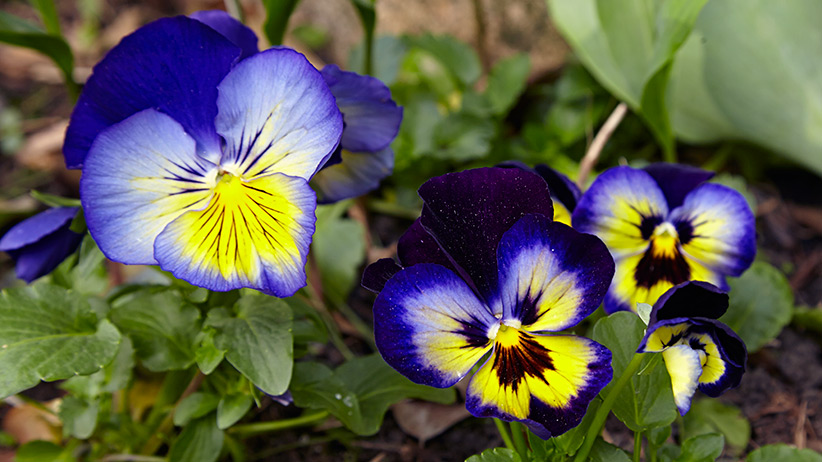
Find a pansy for your garden
Pansy faces can be bicolored, whiskered (with streaks radiating from the center, sometimes called “cat-faced”), blotched or clear.
In addition to quite a few color options, there’s a range of flower sizes with pansies.
- The big 4- to 5-in. ones add great early spring color to a perennial border.
- Small to midsized pansy flowers, from 1 to 3 in., do well in rainy climates, such as the Pacific Northwest. This size flower doesn’t fold over on itself like the bigger ones do, so holds up better to fog and rain.
Check out some examples of what you’ll find at your garden center or available online in the gallery below.



